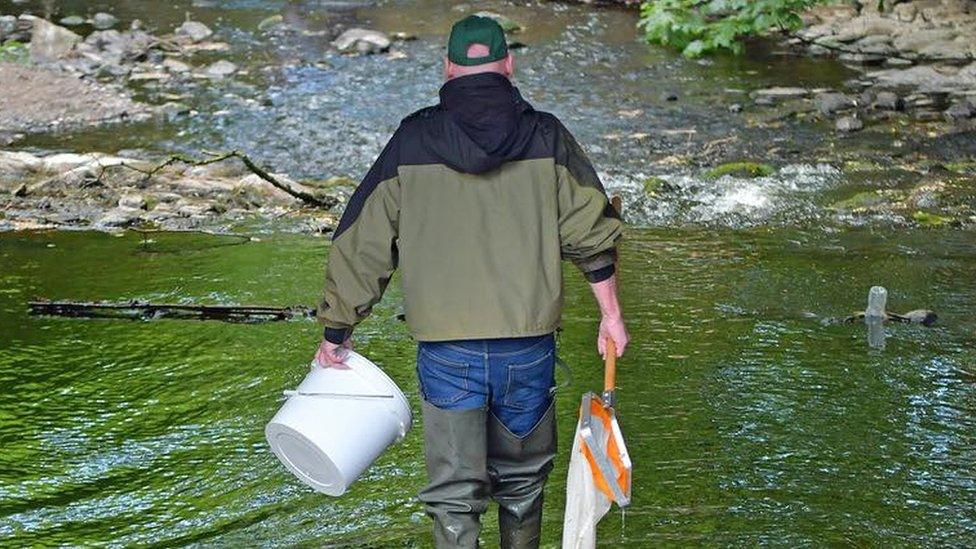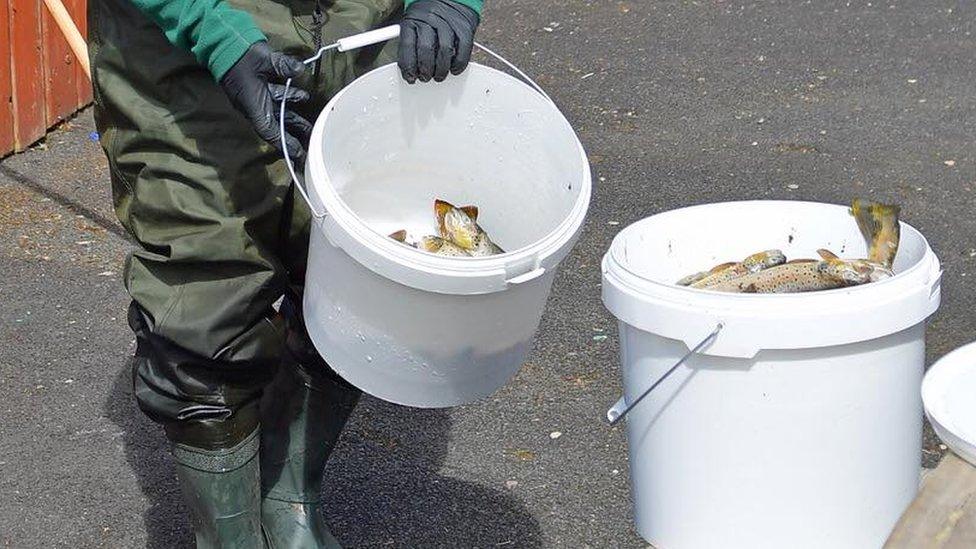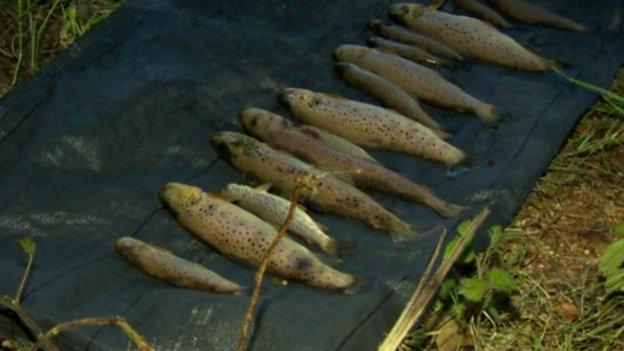'Significant fish kill' in Glenavy River, County Antrim
- Published

Tony McCormick helped collect the dead fish along a section of the river
A "significant fish kill" in a County Antrim river has been described as an "environmental disaster".
Alliance Party councillor David Honeyford said he believed up to 1,000 fish had died from pollution.
The incident in Glenavy River was reported by a member of the public on Friday at about 08:30 BST.
Pictures seen by BBC News NI show hundreds of fish lined up along the river banks, as well as several buckets of dead fish.
An investigation remains ongoing to identify the "source of the pollution".
Mr Honeyford, who represents the area on Lisburn and Castlereagh City Council described it as an "environmental disaster for the village".
'This affects everyone'
Mr Honeyford, who visited the site, said he estimated 1,000 fish had been killed based on the number recovered from a small section of the river.
Allow X content?
This article contains content provided by X. We ask for your permission before anything is loaded, as they may be using cookies and other technologies. You may want to read X’s cookie policy, external and privacy policy, external before accepting. To view this content choose ‘accept and continue’.
"Those in the buckets are from less than a 100m stretch of the river," he told BBC News NI.
"The river feeds into Lough Neagh, which supplies drinking water for us, this will affect everyone," he added.

Peter Robinson holds a bucket of dead fish collected from a 100m stretch of the river
The councillor said pollution has been a "recurring problem in the river over the years" and believes those responsible need more than a "slap on the knuckles".
He called for "substantial fines" to be imposed on those responsible.
A spokesperson for the Department of Agriculture, Environment and Rural Affairs (DAERA) confirmed it and the Northern Ireland Environment Agency (NIEA) responded to a water pollution report on Friday.
The spokesperson said the NIEA immediately deployed a water quality inspector to the area to confirm the report and assess the environmental impact.
"A significant fish kill" was confirmed and DAERA Inland Fisheries staff were informed.
The spokesperson added that a joint NIEA and DAERA Inland Fisheries investigation remained ongoing to identify the source of the pollution.
- Published30 June 2014
